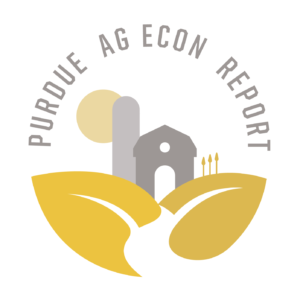Dairy Situation Improving After Price/Cost Squeeze
December 23, 2012
PAER-2012-17
Nicole Olynk Widmar, Assistant Professor Agricultural Economics and Mike Schutz, Professor Animal Science
The December 2012 Class I base milk price was up over $2.92 from December 2011 and up $0.69 from November, to $21.39/cwt (Dairy Profit Weekly, Dec 3, 2012). While current higher milk and dairy product prices are welcome, very high feed costs are keeping margins under stress, especially for those purchasing large proportions of their feed. According to USDA, October 2012 U.S. average milk production costs hit $29.13/cwt in October 2012, with feed representing about 59% of total costs. Cost of production in 2012 represents an increase of $4.99/cwt from the year prior. Adding insult to injury, producers noticed a Producer Price Differential of more than -$4.00 on their October milk checks, resulting from the sharp price increase that left Class I prices lower than Class III.
Cow culling has increased due to strong cull cow prices and tight margins. A total of 285,400 dairy cows were slaughtered under federal inspection in October of 2012, the highest monthly total since 1997. Moderate U.S. herd contraction is expected to continue through 2013 with the U.S. dairy cow herd dropping to 9.125 million head, according to USDA.
Both grain and forage prices are key factors in the record high production costs. Alfalfa hay was reported at $215/ton nationally in mid-November, 11% higher than the year previous. Assuming weather conditions return to normal in 2013, alfalfa prices may ease. But, while dairy feed ration costs will likely be lower in 2013 than 2012, feed costs are expected to remain high compared to historic levels. As of November 29, Class III milk prices were expected to average $19.94 for the remainder of 2012, and $18.75 for the first 6 months of 2013, resulting in mailbox milk prices less than costs of production for many dairy farms. The direction for dairy policy in the next farm bill remains murky. The Milk Income Loss Contract (MILC) program expired with the previous farm bill on September 30, 2012. Had the MILC program continued, there would have been payments for eligible producers well into 2013 because of the recently added feed price adjuster. Absence of the MILC program changes the forecasting of future milk prices.
